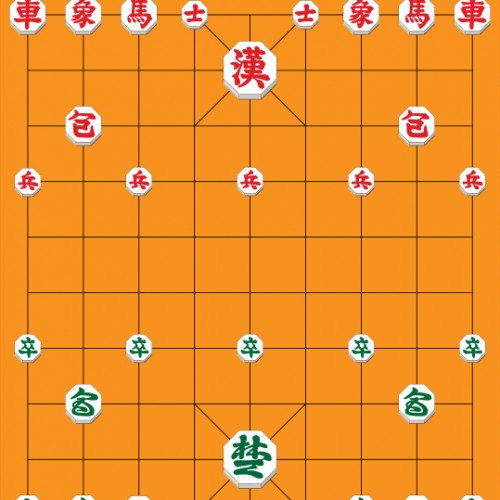JANGGI VS SHATRANJ

JANGGI
Janggi (including romanizations changgi and jangki), sometimes called Korean chess, is a strategy board game popular in Korea. The game was derived from xiangqi (Chinese chess) of China and is very similar to it, including the starting position of the pieces, and the 9×10 gameboard, but without the xiangqi "river" dividing the board horizontally in the middle. Janggi is played on a board nine lines wide by ten lines long. The game is sometimes fast paced due to the jumping cannons and the long-range elephants, but professional games most often last over 150 moves and so are typically slower than those of Western chess. In 2009, the first world janggi tournament was held in Harbin, Heilongjiang China. The board is composed of 90 intersections of 9 vertical files and 10 horizontal rows. The board has nearly the same layout as that used in xiangqi, except the janggi board has no "river" in the central row. The pieces consist of disks marked with identifying characters and are placed on the line intersections (as in xiangqi and Go in China). Janggi pieces are traditionally octagonal in shape, and differ in size according to their rank. The sides are Blue (or sometimes Green), which moves first, versus Red. Each side has a palace that is 3 lines by 3 lines (9 positions) in the centre of their side of the board against the back edge. The palace contains four diagonal lines extending outwards from the centre, forming an "X" shape.
Statistics for this Xoptio

SHATRANJ
Shatranj (Arabic: شطرنج; Persian: شترنج; from Middle Persian chatrang چترنگ) is an old form of chess, as played in the Sasanian Empire. Its origins are in the Indian game of chaturaṅga. Modern chess gradually developed from this game, as it was introduced to the western world by contacts in Muslim Al-Andalus (modern Spain) and in Sicily in the 10th century. The Persian word shatranj ultimately derives from Sanskrit (Sanskrit: चतुरङ्ग; caturaṅga) (catuḥ: "four"; anga: "arm"), referring to the game of the same name: Chaturanga. In Middle Persian the word appears as chatrang, with the 'u' lost due to syncope and the 'a' lost to apocope, such as in the title of the text Mâdayân î chatrang ("Book of Chess") from the 7th century AD. In Persian folk etymology, a Persian text refers to Shah Ardashir I, who ruled from 224–241, as a master of the game: Three books written in Pahlavi, Kar-Namag i Ardashir i Pabagan, Khosrow and ridag, and Wizārišn ī čhatrang ("Treatise on Chess"), also known as the Chatrang Nama ("Book of Chess"), all mention chatrang. In Kār-nāmak it is said that Ardashīr "with the help of the gods became more victorious and experienced than all others in polo, horsemanship, chess, backgammon, and other arts," and in the small treatise on Khosrow and ridag, the latter declares that he is superior to his comrades in chess, backgammon, and hašt pāy. Bozorgmehr, the author of Wizārišn ī čhatrang, describes how the game of chess was sent as a test to Khosrow I (r. 531-79) by the "king of the Hindus Dēvsarm" with the envoy Takhtarītūs and how the test was answered by the vizier Bozorgmehr, who in his turn invented the game Backgammon as a test for the Hindus. These three Middle Persian sources do not give any certain indication of the date when chess was introduced into Persia. The mentions of chess in Kar-Namag i Ardashir i Pabagan and Khosrow and ridag are simply conventional and may easily represent late Sasanian or even post-Sasanian redactions. According to Touraj Daryaee, Kar-Namag i Ardashir i Pabagan is from 6th century. Wizārišn ī čhatrang was written in the 6th century.